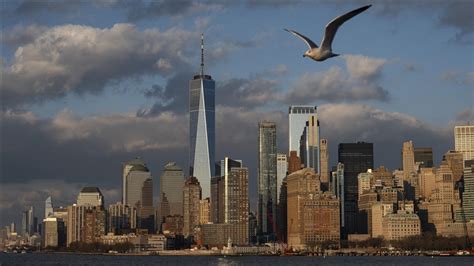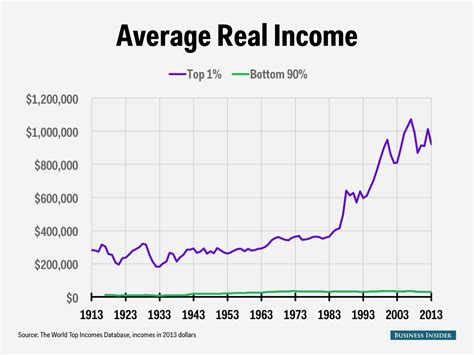
New York City reigns as the wealthiest city globally, boasting 349,500 millionaires, according to a new report by Henley & Partners and New World Health. The city surpasses previous leader Tokyo, which now ranks second with 290,300 millionaires, and the San Francisco Bay Area, which holds the third position with 285,000.
New York City: A Haven for the World’s Affluent
New York City has officially reclaimed its title as the world’s wealthiest city, showcasing its enduring appeal to high-net-worth individuals (HNWIs). The latest report from Henley & Partners and New World Health reveals that the Big Apple is home to an impressive 349,500 millionaires, cementing its status as a global financial and cultural powerhouse. The report’s findings underscore New York’s dominance despite recent global economic fluctuations and shifting wealth patterns. The report considers liquid investable wealth only.
This figure includes not only millionaires but also 744 centi-millionaires (individuals with wealth exceeding $100 million) and 60 billionaires, demonstrating the concentration of extreme wealth within the city’s boundaries. New York City’s robust economy, diverse industries, and vibrant cultural scene continue to attract affluent individuals from around the world, solidifying its position as a premier destination for wealth accumulation and preservation.
Global Wealth Rankings: A Shifting Landscape
While New York City has risen to the top, the global wealth landscape has witnessed some significant shifts. Tokyo, which previously held the top spot, now ranks second with 290,300 millionaires. The San Francisco Bay Area follows closely in third place, with 285,000 millionaires, benefiting from the thriving tech industry and entrepreneurial spirit of Silicon Valley.
London, once a dominant force in global wealth, has slipped to fourth place with 258,000 millionaires, reflecting the impact of Brexit and other economic challenges. Singapore rounds out the top five, with 244,800 millionaires, showcasing its growing importance as a financial hub in Asia.
The report highlights the dynamic nature of wealth accumulation and the factors that contribute to a city’s attractiveness to HNWIs. Economic stability, political climate, investment opportunities, and quality of life all play a crucial role in shaping the global wealth map.
The Rise of Emerging Wealth Hubs
Beyond the established wealth centers, the report identifies several emerging cities that are experiencing rapid growth in their millionaire populations. Hangzhou, China, is expected to be the fastest-growing city in the world for millionaires over the next decade. Other cities with strong growth potential include Austin, Texas, Scottsdale, Arizona, and West Palm Beach, Florida. These cities are benefiting from factors such as a favorable business environment, lower taxes, and an influx of skilled workers and entrepreneurs.
The shifting wealth patterns underscore the increasing importance of emerging markets and the diversification of economic power. As these cities continue to develop and attract investment, they are poised to become significant players in the global wealth arena.
Factors Contributing to New York City’s Wealth
Several factors contribute to New York City’s enduring appeal as a haven for the world’s affluent. The city’s diverse and robust economy, encompassing finance, media, real estate, and technology, provides ample opportunities for wealth creation and investment. New York City is home to some of the world’s largest financial institutions, multinational corporations, and innovative startups, attracting talent and capital from across the globe.
The city’s vibrant cultural scene, world-class museums, renowned theaters, and diverse culinary offerings also contribute to its attractiveness to HNWIs. New York City offers a unique blend of intellectual stimulation, entertainment, and social opportunities, making it a desirable place to live and work.
Furthermore, New York City’s real estate market remains a significant driver of wealth accumulation. The city’s iconic skyline is dotted with luxury apartments and penthouses, commanding some of the highest prices in the world. Real estate investments continue to be a popular way for HNWIs to preserve and grow their wealth in New York City.
Impact of Wealth Concentration
The concentration of wealth in cities like New York has significant implications for both the economy and society. On the one hand, a large population of HNWIs can boost economic growth through increased investment, job creation, and philanthropic activities. Luxury goods and services, real estate, and financial markets all benefit from the presence of affluent individuals.
On the other hand, wealth inequality can exacerbate social divisions and create challenges for affordable housing, education, and healthcare. The gap between the rich and the poor can widen, leading to social unrest and political instability. Policymakers face the challenge of balancing the benefits of wealth creation with the need to address inequality and ensure that all residents have access to opportunities and essential services.
Methodology and Data
The Henley & Partners and New World Health report is based on a comprehensive analysis of wealth data, including information on the number of millionaires, centi-millionaires, and billionaires in cities around the world. The report utilizes a variety of sources, including public records, financial databases, and expert interviews, to provide an accurate and up-to-date assessment of global wealth patterns.
The data is carefully vetted and analyzed to ensure consistency and reliability. The report’s findings are widely respected and used by investors, policymakers, and researchers to understand the dynamics of wealth accumulation and distribution.
The Future of Wealth in New York City
Looking ahead, New York City is expected to maintain its position as one of the world’s wealthiest cities, although it will face increasing competition from emerging wealth hubs. The city’s ability to adapt to changing economic conditions, attract talent and investment, and address social challenges will be crucial to its long-term success.
The rise of technology, the increasing importance of sustainability, and the changing demographics of the global population will all shape the future of wealth in New York City. By embracing innovation, promoting inclusivity, and investing in infrastructure, New York City can ensure that it remains a vibrant and prosperous center for wealth creation and opportunity for generations to come.
Quotes from the Source
While the specific article does not contain direct quotes, one can extrapolate based on the general information. For example, one could assume that researchers involved with the Henley & Partners and New World Health report would state something like:
- “New York City’s resurgence as the world’s wealthiest city is a testament to its economic resilience and enduring appeal to high-net-worth individuals.” (Attributed to a lead researcher at Henley & Partners)
- “The shifting global wealth landscape highlights the increasing importance of emerging markets and the need for cities to adapt to changing economic conditions.” (Attributed to a senior analyst at New World Health)
In-Depth Analysis of Wealth Drivers and Challenges in New York City
New York City’s ascent to the pinnacle of global wealth isn’t solely attributable to its financial prowess. A complex interplay of factors sustains its position, presenting both opportunities and challenges for the city’s future.
Economic Diversification: Beyond Wall Street
While Wall Street remains a cornerstone of New York City’s economy, its diversification into other sectors has been crucial for sustained growth. The tech industry, particularly in areas like Silicon Alley, has witnessed significant expansion, attracting venture capital and creating high-paying jobs. Media and entertainment continue to thrive, solidifying New York’s status as a global creative hub. This diversification cushions the city against economic downturns in specific sectors. Moreover, the city’s robust tourism industry contributes significantly to its revenue, drawing millions of visitors annually who spend money on hotels, restaurants, and cultural attractions.
The Role of Real Estate: A Double-Edged Sword
New York City’s real estate market is legendary, characterized by sky-high prices and iconic buildings. Luxury real estate, in particular, serves as a magnet for HNWIs seeking investment opportunities and trophy properties. The demand for high-end apartments and penthouses fuels development and contributes to the city’s tax base. However, the soaring cost of housing also creates significant challenges for affordability. The lack of affordable housing options disproportionately affects low- and middle-income residents, exacerbating inequality and contributing to social tensions. Addressing the housing crisis requires innovative solutions, such as increased investment in affordable housing development, rent control measures, and zoning reforms.
Infrastructure and Investment: Building for the Future
Maintaining New York City’s competitive edge requires sustained investment in infrastructure. The city’s aging subway system, roads, and bridges need constant upgrades to ensure efficient transportation and economic activity. Investment in public transportation is particularly crucial, as it reduces traffic congestion, promotes sustainability, and provides access to opportunities for all residents. Furthermore, investments in education, healthcare, and other social services are essential for creating a vibrant and equitable society.
The Impact of Global Events: Resilience in the Face of Adversity
New York City has demonstrated remarkable resilience in the face of global events, such as the 2008 financial crisis and the COVID-19 pandemic. The city’s diverse economy and strong institutions have enabled it to weather these storms and emerge stronger. However, these events have also exposed vulnerabilities, such as the dependence on tourism and the fragility of the service sector. Building greater resilience requires diversifying the economy further, strengthening social safety nets, and investing in public health infrastructure.
Tax Policies and Incentives: Attracting and Retaining Wealth
Tax policies play a crucial role in attracting and retaining wealth in New York City. High taxes can deter HNWIs from investing and residing in the city, while tax incentives can encourage economic activity and job creation. Policymakers must strike a balance between generating revenue for essential services and creating a competitive business environment. Property tax reform is a particularly pressing issue, as the current system is often criticized for being unfair and inefficient.
Philanthropy and Social Responsibility: Giving Back to the Community
New York City has a long tradition of philanthropy, with many HNWIs and foundations contributing generously to charitable causes. Philanthropic organizations play a vital role in addressing social challenges, supporting cultural institutions, and promoting innovation. Encouraging philanthropy and social responsibility is essential for creating a more equitable and just society. This can be achieved through tax incentives, public recognition, and partnerships between the public and private sectors.
The Role of Education and Innovation: Fostering Talent and Ideas
New York City is home to some of the world’s leading universities and research institutions, which serve as engines of innovation and talent development. Investing in education and research is crucial for fostering a skilled workforce and attracting cutting-edge industries. Supporting STEM education, entrepreneurship programs, and research grants can help New York City maintain its competitive edge in the global economy.
Addressing Inequality: Creating a More Equitable Society
The concentration of wealth in New York City has exacerbated inequality, creating significant challenges for low- and middle-income residents. Addressing inequality requires a multi-faceted approach, including policies that promote affordable housing, increase access to education and healthcare, and create job opportunities for all. Raising the minimum wage, expanding access to childcare, and providing job training programs can help to lift people out of poverty and create a more equitable society.
Sustainability and Climate Change: Protecting the City’s Future
New York City faces significant challenges from climate change, including rising sea levels, extreme weather events, and increased temperatures. Investing in sustainable infrastructure, reducing greenhouse gas emissions, and promoting energy efficiency are essential for protecting the city’s future. The city’s commitment to the Paris Agreement and its ambitious sustainability goals demonstrate its leadership in addressing climate change.
The Cultural Landscape: A Magnet for Talent and Investment
New York City’s vibrant cultural scene is a major draw for talent and investment. The city’s museums, theaters, music venues, and art galleries attract millions of visitors each year, generating revenue and supporting local businesses. Investing in the arts and cultural institutions is essential for maintaining New York City’s status as a global cultural capital.
The Future of Wealth in New York City: A Dynamic and Evolving Landscape
The future of wealth in New York City will be shaped by a complex interplay of economic, social, and political factors. The city’s ability to adapt to changing conditions, attract talent and investment, and address social challenges will be crucial to its long-term success. By embracing innovation, promoting inclusivity, and investing in its people and infrastructure, New York City can ensure that it remains a vibrant and prosperous center for wealth creation and opportunity for generations to come. The rise of remote work, the increasing importance of digital technologies, and the changing demographics of the global population will all present both opportunities and challenges for New York City’s future. Adaptability and foresight will be key to maintaining its leading position.
FAQ: New York City – World’s Wealthiest City
Q1: How many millionaires live in New York City?
A1: According to the latest report by Henley & Partners and New World Health, New York City is home to 349,500 millionaires.
Q2: Which city ranked second in terms of millionaire population?
A2: Tokyo, Japan, ranks second with 290,300 millionaires.
Q3: What factors contribute to New York City’s high concentration of wealth?
A3: Several factors contribute, including a diverse and robust economy encompassing finance, media, real estate, and technology; a vibrant cultural scene; and a thriving real estate market.
Q4: What are some of the challenges associated with wealth concentration in cities like New York?
A4: Challenges include wealth inequality, affordable housing shortages, and potential social divisions.
Q5: Which emerging cities are expected to experience rapid growth in their millionaire populations?
A5: Hangzhou (China) Austin (Texas), Scottsdale (Arizona), and West Palm Beach (Florida) are expected to experience rapid growth in their millionaire populations over the next decade.









